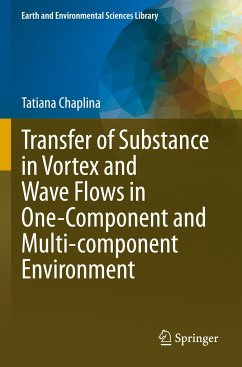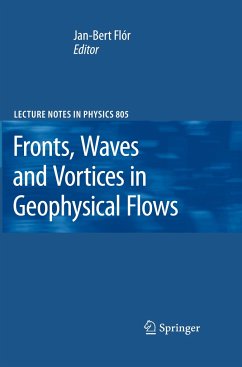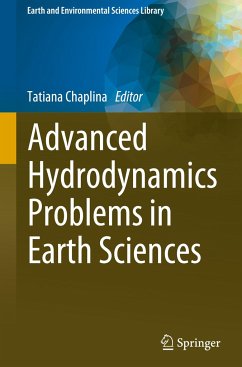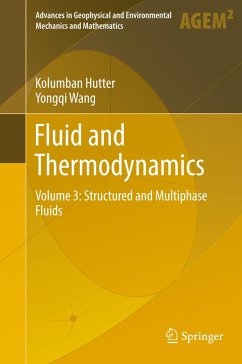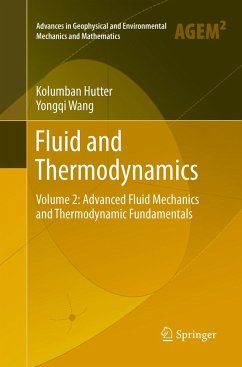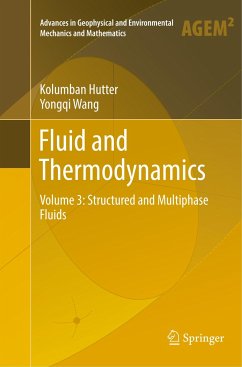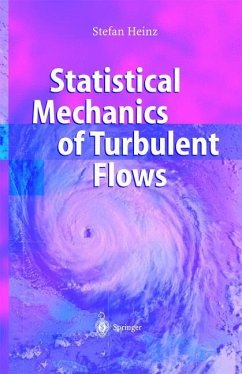
Transfer of Substance in Vortex and Wave Flows in One-Component and Multi-component Environment
Versandkostenfrei!
Versandfertig in 6-10 Tagen
121,99 €
inkl. MwSt.
Weitere Ausgaben:

PAYBACK Punkte
61 °P sammeln!
The study of vortex and wave flows is one of the traditional problems of fluid mechanics, the practical importance of which has grown significantly in recent years. Consideration of the processes of substance transfer in such complex systems as natural water bodies is fraught with many difficulties of a methodological and fundamental nature: the extreme complexity of conducting a full-scale experiment, the complexity and variability of hydrophysical fields of the ocean and hydrometeorological conditions during research, and also, in some cases, the complexity and the variability of the propert...
The study of vortex and wave flows is one of the traditional problems of fluid mechanics, the practical importance of which has grown significantly in recent years. Consideration of the processes of substance transfer in such complex systems as natural water bodies is fraught with many difficulties of a methodological and fundamental nature: the extreme complexity of conducting a full-scale experiment, the complexity and variability of hydrophysical fields of the ocean and hydrometeorological conditions during research, and also, in some cases, the complexity and the variability of the properties of the transferred substance. In this connection, it is of particular interest to study the transfer of markers in stationary vortex and wave flows, which can form in laboratory facilities with constant external conditions. In this case, it is possible to avoid problems associated with the spatial and temporal variability of natural sources of vortex formations and directly trace thedependence of the characteristic flow parameters or the characteristics of the movement of solid or other objects placed during. This book presents the results of experimental and theoretical studies of the dynamics and structure of multiphase vortex flows and the nature of the transfer of three types of markers: solid-state (ice, plastic), immiscible with water (oil, oil, diesel) and soluble (aniline dyes, uranyl). The results will be important, first of all, for a better understanding of the behavior of various impurities in the circulation flows and more accurate prediction of their distribution in natural conditions (in a stratified hydrosphere and atmosphere).



